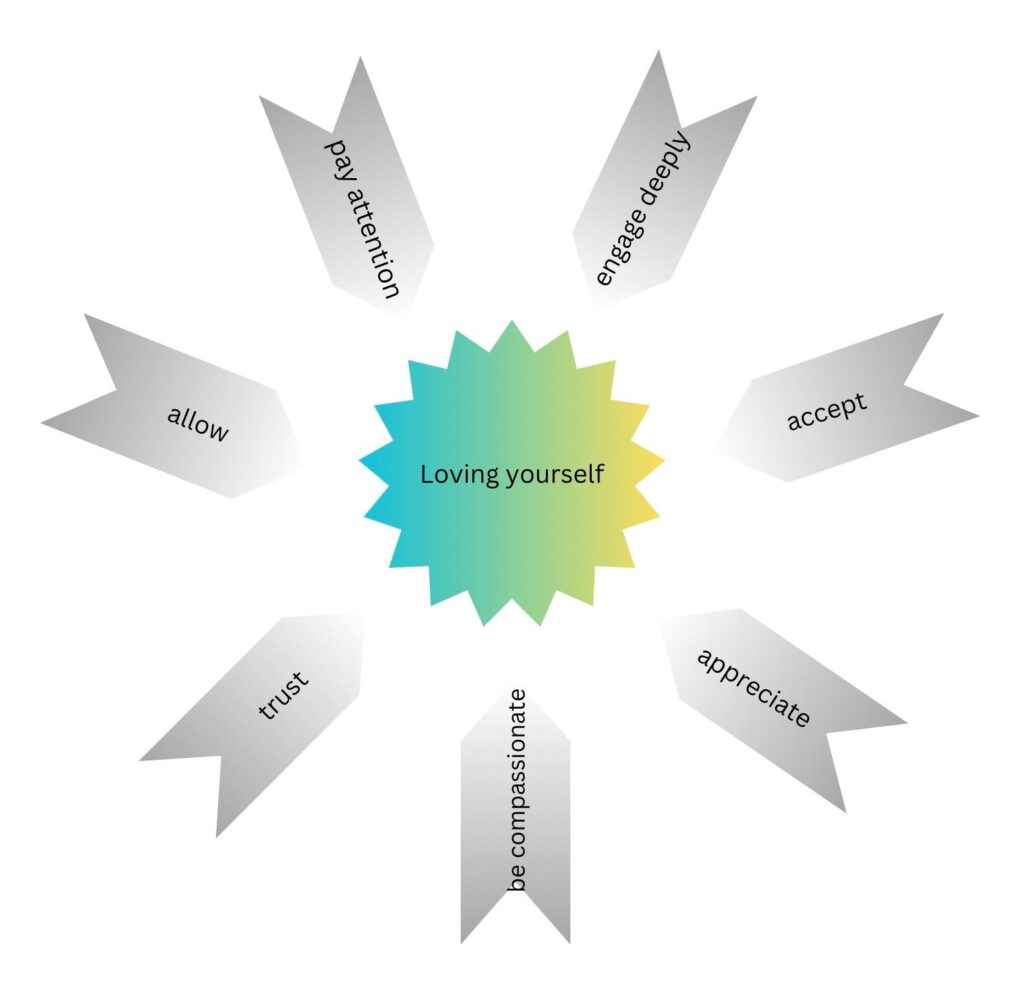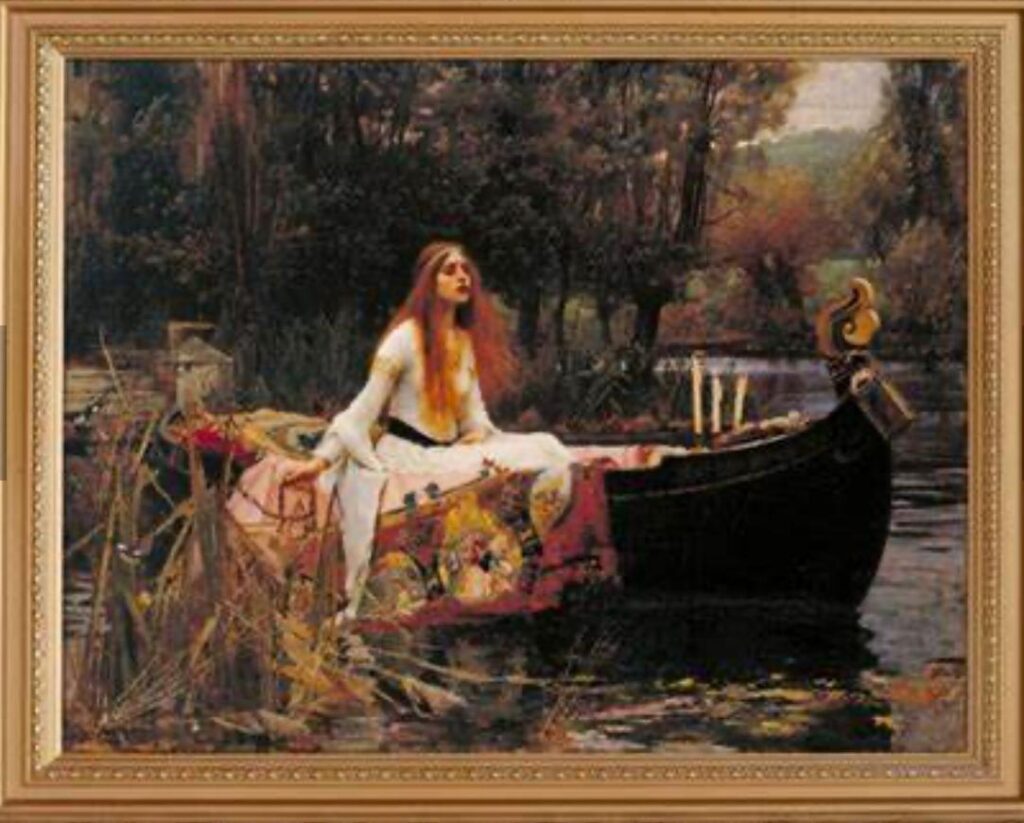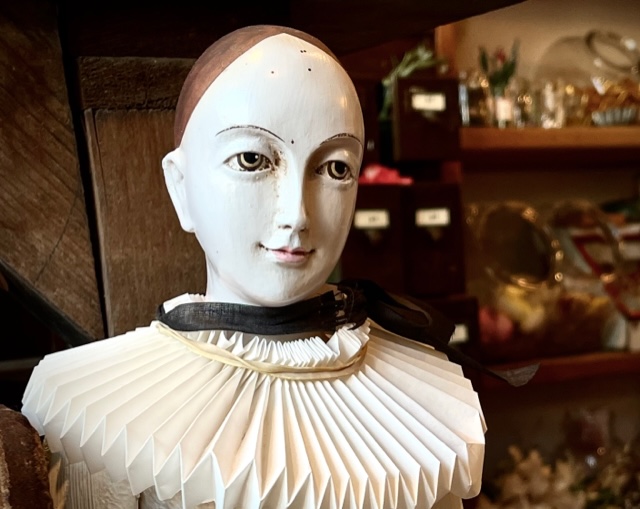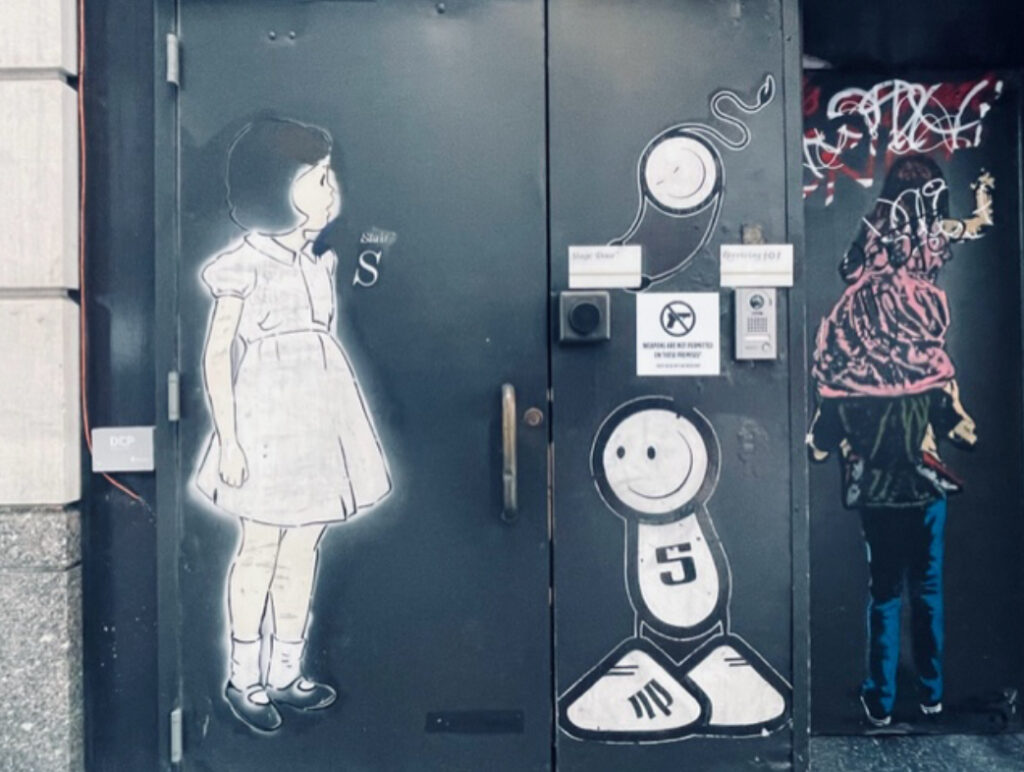
How often do we use the word “love” in our daily lives? Its meaning, scope, and depth may change, but the word itself remains the same.
We love coffee, good conversation, comfort, making money, being appreciated, our parents, children, friends, and partners… the list goes on.
But what is love? Go ahead, type it into your favorite search engine and see what comes up. On my screen, the definitions revolve around “a person’s feelings of interest and affection toward someone, a situation, or an object.”
Now, what about loving? I’m talking about the act itself, love as a verb.
And I’m not done yet—I have an even harder question: “What does it mean to love yourself?” or “How does one love themselves? Is that even possible?”
These are questions I hear often. For years, people from all corners of the world have joined my art therapy and meditation workshops, whether online or in a studio. Their languages, cultures, and lives may differ, but their human experiences, deep down at the core, remain the same. We often delve into the question “How do you love yourself?”
While loving others often feels natural, we seem to freeze when it comes to loving ourselves.
So I ask:
- “When was the last time you took sick leave when you were unwell?”
- “When was the last time you gave yourself permission to spend a day as you wished?”
- “Have you accepted your feelings without denial or deceit? Have you owned your emotions and actions?”
To clarify the concept further, I explain the layers of self-love. Drawing from psychologist Daniel Richo’s book How to Be an Adult in Relationships, which outlines the Five A’s of love—Attention, Acceptance, Appreciation, Affection, and Allowing—
I’ve expanded these dimensions over time. To me, seven layers better define love:
- Paying attention
- Deeply engaging
- Accepting
- Appreciating
- Showing compassion
- Trusting
- Allowing
Our Deepest Need: Love
From the moment we are born, we seek love. First from our parents and caregivers, then from extended family, friends, teachers, and society.
Being loved teaches us not only how to love ourselves but also how to love others. Love from the outside helps us connect with the love within. If our need for love is unmet, we may struggle to access our inner source of love. The love we experience shapes the way we express love.
You’ve likely heard the stories… of successful business people who once craved love as children, of souls pushing their limits every day for a glimpse of affection, of performers longing for one specific person in a crowded room to show up, of parents willing to do everything but everything for their children. The list goes on. You understand what I mean.
If we didn’t learn to love ourselves as children—and it doesn’t always take trauma to miss out; some of us are simply hungrier for love—then the responsibility falls to us. We are no longer children. As adults, we can identify and care what we want and shape our lives accordingly.
Adulthood: A Chance to Relearn Self-Love
Adulthood gives us the chance to relearn self-love. Recognizing, accepting, transforming, and reshaping old patterns and behaviors is more challenging than learning for the first time, but this time, it’s done consciously.
But why settle for a life lacking love when we could live it fully? Why burden others with our unmet needs? Why deprive our loved ones of deeper love? If we cannot love ourselves, how can we truly love others?
Did I mention that we’re no longer children? As adults, we can take responsibility for our lives. Let’s start with the intention to mend our broken love within. Do we know how to repair it?
While our paths in the experience of love may differ, we generally agree that loving oneself is the hardest part.
The Layers of Love: A Journey
It all begins with attention. If we listen to the voice within, to our bodies, our lives, our decisions, our homes, our wardrobes, our work, and our friends, what would they say? What messages would we receive if we listened without censorship? If we listened even deeper, what hidden truths might emerge within and around us? Wouldn’t we get to know ourselves better? Don’t we deserve that attention?
We might notice that the outside—our wardrobes, homes, relationships—isn’t so different from our inner world. We may want to deny it, but once we see it, there’s no going back.
As we focus our attention, interest arises. We become curious about our desires, dreams, and pains. Compassion emerges: “Oh, my dear, how you’ve suffered,” we say to ourselves. We accept what is, forgive ourselves, and give ourselves the space to breathe.
We feel an expansion. The tightness begins to dissolve. And then, what’s this? A fulfilling feeling swells: trust.
This bond, this trust, connects us and fills the void. How beautiful it is to trust ourselves and the whole! We linger there and begin to appreciate ourselves. If you don’t appreciate yourself, why should anyone else? If you don’t honor your existence, why should anyone else elevate it? We honor our wholeness with trust. The cycle of love has already begun.
A Lifelong Practice
I have good news and bad news. First, the bad: this isn’t something that happens in one session. It takes effort. Now the good news: once you start tasting the transformations, it naturally becomes part of your life.
If you’ve noticed, these layers are not just concepts; they’re actions. We learn them not by reading but by experiencing. They are conscious actions we take after owning and taking responsibility for our emotions. They are the actions that direct our energy and shape our lives.
So, let’s talk less and listen deeply. Let’s feel the actions we want in our hearts before carrying them out wholeheartedly.
What do you think?
 The Lady of Shalott by John William Waterhouse
The Lady of Shalott by John William Waterhouse


